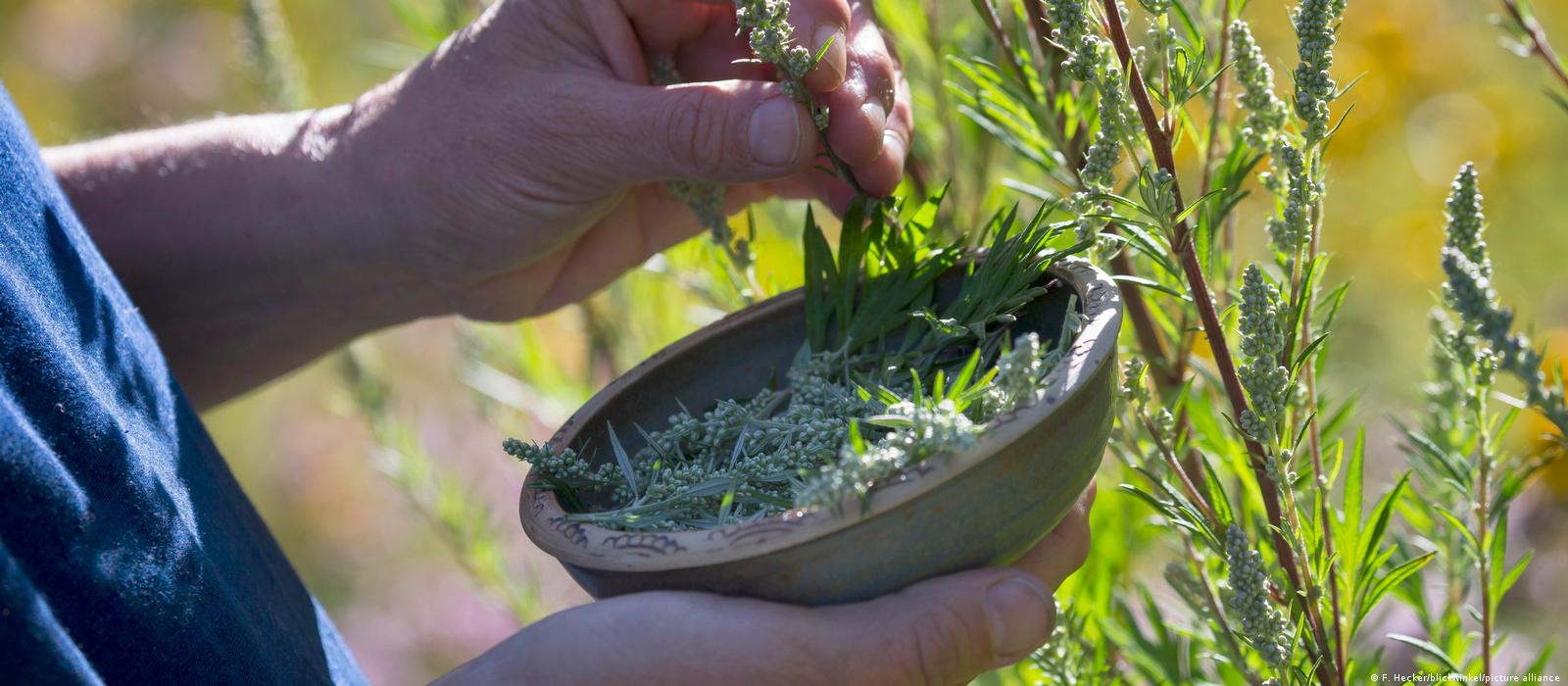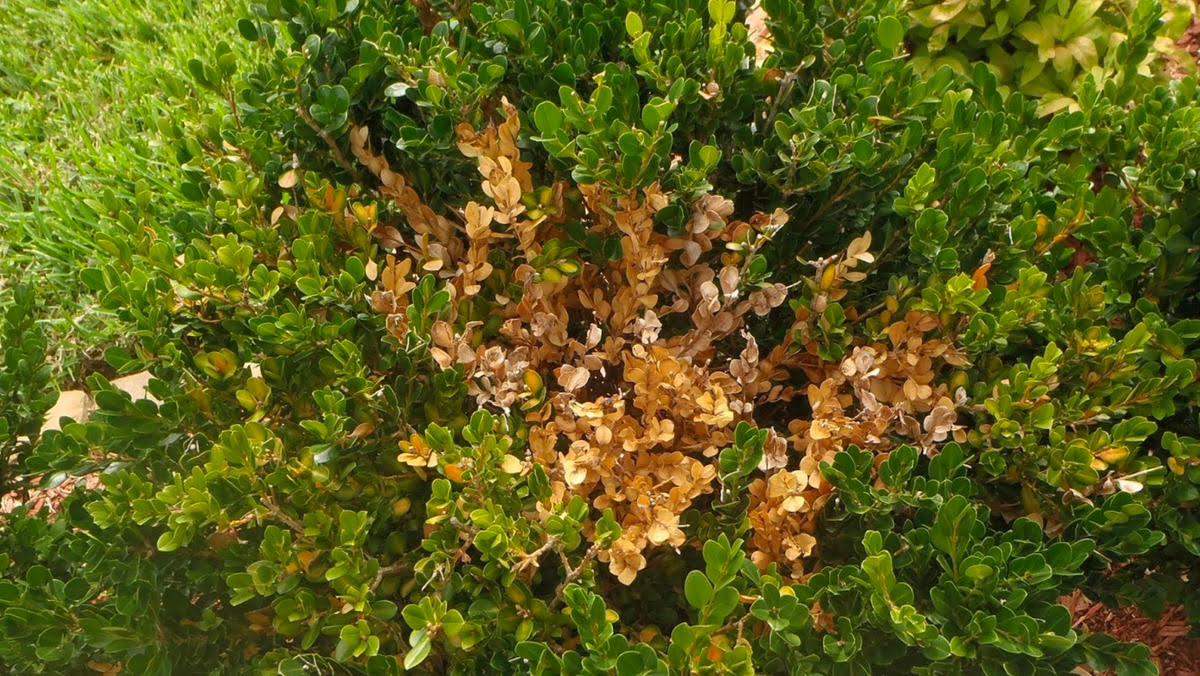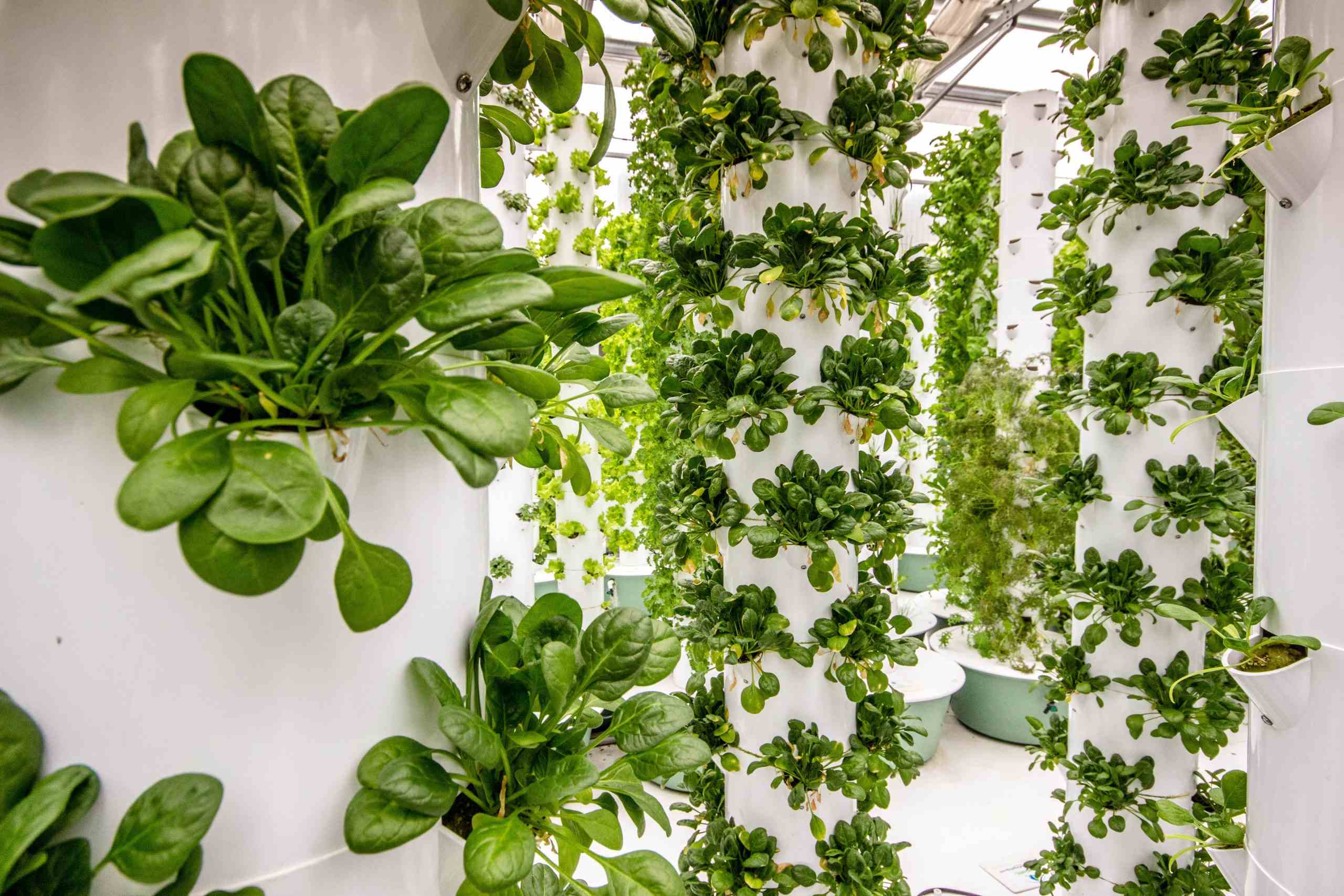Home>Gardening News and Trends>Gardening Trends>What Causes PH Jumps In Aeroponics


Gardening Trends
What Causes PH Jumps In Aeroponics
Modified: February 10, 2024
Discover the reasons behind pH fluctuations in aeroponics systems and learn how gardening trends may affect pH levels. Uncover the secrets to maintaining optimal pH for successful aeroponic gardening.
(Many of the links in this article redirect to a specific reviewed product. Your purchase of these products through affiliate links helps to generate commission for Chicagolandgardening.com, at no extra cost. Learn more)
Table of Contents
Introduction
Welcome to the world of aeroponics, an innovative gardening technique that has been steadily gaining popularity in recent years. Aeroponics is a soilless cultivation method that involves growing plants in an air or mist environment, providing them with nutrients through a fine mist sprayed directly onto their roots. This unique approach to gardening offers numerous benefits, including increased growth rates, higher yields, and the ability to grow plants in limited spaces.
One critical aspect of successful aeroponic gardening is maintaining the proper pH balance of the nutrient solution. pH, which stands for “potential of hydrogen,” is a measure of the acidity or alkalinity of a solution. In aeroponics, maintaining the ideal pH range is crucial because it directly affects nutrient availability, plant growth, and overall health.
But what causes pH jumps in aeroponics systems? Why do pH levels fluctuate, and how can we prevent or correct these fluctuations? In this comprehensive guide, we will explore the various factors that influence pH levels in aeroponics systems and share some practical tips for troubleshooting pH jumps.
Whether you are a seasoned aeroponics enthusiast or just getting started, understanding the key factors contributing to pH changes will help you maintain optimal conditions for your plants. So, let’s dive in and explore the fascinating world of pH management in aeroponics!
Understanding Aeroponics
Aeroponics is a cutting-edge gardening technique that involves growing plants in an environment where their roots are suspended in the air or mist. Unlike traditional methods such as soil or hydroponics, aeroponics relies solely on the outside support system to provide nutrients, water, and oxygen to the plants.
The basic principle of aeroponics revolves around misting the plant roots with a nutrient-rich solution. This misting process ensures that the roots receive a constant supply of nutrients and oxygen, promoting fast and robust growth. By misting the roots, the plants avoid water stress, leading to healthier and more productive crops.
The primary advantage of aeroponics is its efficiency in water and nutrient usage. Since the roots are suspended in the air, there is no need for excess water or soil to support the plants. The misting system delivers precise amounts of nutrients directly to the roots, minimizing waste and optimizing plant uptake. This makes aeroponics an environmentally friendly and sustainable gardening method.
Another benefit of aeroponics is its ability to maximize space utilization. With traditional gardening methods, space can be a limiting factor. However, aeroponics allows for vertical farming, making it possible to grow plants in layers or stacked systems. This vertical approach not only maximizes space but also allows for greater plant density, resulting in higher yields.
Furthermore, aeroponic systems offer better disease and pest control. The absence of soil reduces the risk of soil-borne diseases and pests, providing a cleaner and healthier growing environment. Additionally, the misting system can be equipped with antimicrobial solutions to further prevent the growth of harmful pathogens.
Overall, aeroponics is a revolutionary gardening technique that combines efficiency, productivity, and sustainability. By understanding the fundamental principles of aeroponics, you can harness its potential to grow a wide range of plants with remarkable success.
The Importance of pH in Aeroponics
pH plays a crucial role in the success of aeroponic gardening. It is a measure of the acidity or alkalinity of a solution, and maintaining the proper pH level is essential for optimal nutrient uptake by plants in an aeroponic system.
The nutrient solution used in aeroponics consists of water and a carefully balanced mix of essential minerals and nutrients required for plant growth. However, these nutrients can only be absorbed by plants if the pH of the solution is within the appropriate range.
When the pH is too high or too low, it can negatively impact nutrient availability, leading to nutrient deficiencies or toxicities. This, in turn, can hinder plant growth, weaken their immune systems, and make them more susceptible to diseases and pests.
In aeroponics, the ideal pH range for most plants is between 5.5 and 6.5. Within this range, nutrient availability is optimized, allowing the plants to take in the necessary elements for healthy growth. However, different plant species may have specific pH preferences, so it’s important to consider the specific requirements of the plants you are growing.
One of the main reasons pH is critical in aeroponics is its impact on nutrient solubility. When the pH level deviates from the optimal range, certain nutrients can become insoluble and unavailable for plant uptake. This can lead to nutrient deficiencies, even if they are present in the nutrient solution.
Moreover, pH affects the activity of beneficial microorganisms in the growing medium. In an aeroponic system, maintaining a pH that is conducive to microbial activity is important for nutrient cycling and overall plant health. Beneficial microbes help break down organic matter, release essential nutrients, and suppress the growth of harmful pathogens.
Monitoring and adjusting the pH regularly in aeroponics is essential to ensure that plants receive optimal nutrition and thrive in a healthy environment. Next, we will explore the factors that influence pH levels in aeroponics systems and how to manage them effectively.
Factors That Influence pH Levels in Aeroponics Systems
Several factors can impact the pH levels in aeroponics systems. Understanding these factors is crucial for maintaining the desired pH range and providing the optimal growing conditions for your plants.
Nutrient Solution Composition: The composition of the nutrient solution itself can have a significant effect on pH. Different nutrients can either raise or lower the pH of the solution. For example, adding acidic substances like phosphoric acid or citric acid can lower the pH, while alkaline substances like potassium hydroxide or calcium hydroxide can raise the pH. It’s important to follow the recommended nutrient ratios and adjust the pH accordingly to maintain a balanced solution for optimal plant growth.
Water Quality and Source: The quality and source of water used in the aeroponic system can impact pH levels. Tap water, for instance, may contain minerals or impurities that can alter the pH. It’s recommended to test the pH of your water source and make adjustments accordingly. The use of purified or filtered water can help maintain a more consistent pH level.
pH Adjusting Chemicals: pH adjusting chemicals, such as pH up or pH down solutions, are commonly used to achieve the desired pH range in aeroponics. These chemicals can be utilized to raise or lower the pH of the nutrient solution, depending on the needs of the plants. It’s important to use these chemicals cautiously and follow the recommended dosages to avoid excessive pH fluctuations.
Environmental Factors: Environmental conditions can also influence pH levels in aeroponics systems. Factors such as temperature, humidity, and airflow can affect nutrient uptake and the overall pH stability. Higher temperatures and low humidity levels can cause the nutrient solution to evaporate more quickly, leading to pH fluctuations. Adequate ventilation and temperature control can help minimize these fluctuations and maintain a stable pH environment.
Maintenance and Monitoring: Regular maintenance and monitoring are critical in managing pH levels in aeroponics systems. Monitoring the pH on a daily basis using a reliable pH meter or test kit allows you to identify any fluctuations in real-time. Adjusting the pH as needed and maintaining a consistent pH range is essential for optimal plant growth.
By understanding these factors and their impact on pH levels, you can effectively manage and control the pH in your aeroponics system, ensuring that your plants receive the optimal conditions they need to thrive. In the next section, we will explore the different nutrients and chemicals used to adjust pH in aeroponics.
Nutrient Solution Composition
The composition of the nutrient solution in aeroponics is crucial for plant health and growth. The nutrient solution provides essential minerals and elements necessary for proper plant nutrition. The composition of the nutrient solution can affect not only the availability of nutrients but also the pH levels in the aeroponic system.
When preparing the nutrient solution, it is important to ensure that the nutrient concentration is balanced and meets the specific needs of the plants being cultivated. The composition of the nutrient solution will vary depending on the type of plants being grown, as different plants have different nutrient requirements.
The nutrient solution typically consists of macronutrients such as nitrogen (N), phosphorus (P), and potassium (K), as well as micronutrients such as iron (Fe), zinc (Zn), and manganese (Mn), among others. These nutrients are essential for plant growth, and their availability in the nutrient solution is critical for ensuring optimal plant health.
When preparing the nutrient solution, it is important to carefully follow the instructions provided by the manufacturer of the nutrient solution or use a reliable nutrient calculator. These resources will guide you in determining the proper ratios and concentrations of nutrients to achieve the desired plant growth.
In addition to macronutrients and micronutrients, pH buffering substances may be included in the nutrient solution to help stabilize the pH. These substances can help maintain the pH within the desired range and prevent drastic fluctuations. Common pH buffering substances used in aeroponics include potassium bicarbonate, potassium phosphate, and calcium carbonate.
It is important to note that the nutrient solution should be mixed accurately and precisely according to the manufacturer”s instructions or nutrient calculator. Overdosing or underdosing nutrients can have adverse effects on plant growth and pH stability. It is also recommended to regularly test and adjust the pH of the nutrient solution to ensure it remains within the optimal range for the specific plant species being cultivated.
By understanding the importance of nutrient solution composition in aeroponics and carefully preparing and maintaining the nutrient solution, you can provide your plants with the necessary elements for healthy growth and achieve optimal pH levels in your aeroponic system.
Water Quality and Source
The quality and source of water used in aeroponics can have a significant impact on pH levels and overall plant health. Water is the primary component of the nutrient solution, and any impurities or minerals present in the water can affect the pH stability and nutrient availability.
Tap water is commonly used in aeroponics systems, but its quality can vary depending on the location. Tap water may contain minerals, such as calcium, magnesium, and iron, which can influence the pH of the nutrient solution. These minerals can either increase or decrease the pH, depending on their concentration.
It is recommended to test the pH of the tap water before using it in your aeroponic system. This will give you a baseline reading and help you determine if any adjustments are necessary to achieve the desired pH range. Additionally, testing the water for mineral content can provide valuable information about its suitability for use in aeroponics.
If tap water quality is a concern or if it contains high levels of minerals, using purified or filtered water may be a viable option. Purified water, such as reverse osmosis (RO) water, does not contain any impurities or minerals, providing a clean base for preparing the nutrient solution. Using purified water can help maintain a more stable pH in your aeroponic system.
In some cases, using a mix of tap water and purified water can also be an effective solution. This can help balance the mineral content and pH level, providing a more optimal growing environment for your plants.
It is important to note that the pH of the water used in aeroponics is not the only factor to consider. Water temperature can also affect pH stability and nutrient uptake. Ideally, the water temperature should be kept within a range suitable for the specific plants being grown. Too high or too low water temperatures can impact plant growth and nutrient availability.
In summary, the water quality and source are important considerations in aeroponics. Testing the pH and mineral content of the water, and making appropriate adjustments, will help maintain a stable pH in the nutrient solution. Whether using tap water, purified water, or a mix of the two, ensuring the water quality is suitable for aeroponic gardening is essential for optimal plant health and growth.
pH Adjusting Chemicals
pH adjusting chemicals are commonly used in aeroponics to raise or lower the pH of the nutrient solution. These chemicals play a crucial role in maintaining the desired pH range for optimal plant growth and nutrient uptake.
One commonly used pH adjusting chemical in aeroponics is potassium hydroxide (KOH), also known as pH up. This alkaline substance is used to increase the pH of the nutrient solution when it falls below the desired range. It is important to add pH up gradually and in small increments, regularly checking and adjusting the pH as needed. Overdosing can lead to excessively high pH levels, which can hinder nutrient uptake and cause nutrient imbalances.
On the other hand, pH down solutions are used to lower the pH of the nutrient solution when it is too high. Common pH down solutions include phosphoric acid, sulfuric acid, and citric acid. Similar to pH up, pH down should be added gradually and in controlled amounts to prevent drastic pH fluctuations.
When using pH adjusting chemicals, it is crucial to wear appropriate protective gear, such as gloves and eye protection, to ensure your safety. Additionally, it is essential to handle these chemicals with caution and follow the manufacturer’s instructions for proper usage and dilution.
Another alternative for pH adjustment in aeroponics is the use of pH buffering substances. These substances help stabilize the pH and prevent drastic fluctuations. Common pH buffering substances used include potassium bicarbonate, potassium phosphate, and calcium carbonate. They can help maintain a consistent pH range and minimize the need for frequent adjustments.
It is important to note that the choice of pH adjusting chemical or buffering substance may depend on the nutrient solution composition and the specific needs of the plants being grown. Some plants may prefer a slightly acidic pH, while others may thrive in a slightly alkaline pH. Understanding the pH preferences for different plant species will help you make informed decisions in choosing the appropriate pH adjusting chemicals.
Regular monitoring of the pH levels of the nutrient solution is essential to ensure that it remains within the desired range. pH meters or test kits are commonly used to measure the pH accurately. Adjustments can then be made as needed to maintain the optimal pH for your plants.
By using pH adjusting chemicals and buffering substances responsibly and regularly monitoring the pH levels, you can maintain a stable and suitable pH for your aeroponic system, promoting healthy plant growth and nutrient uptake.
Environmental Factors
Environmental factors play a significant role in the pH stability of aeroponic systems. It is important to consider these factors to maintain a consistent pH and create optimal growing conditions for your plants.
Temperature: Temperature can significantly affect pH levels in aeroponics. Higher temperatures can speed up chemical reactions, including the breakdown of nutrients and the release of dissolved gases, which can influence pH. It is important to maintain a stable temperature within the optimal range for the specific plants being grown to minimize pH fluctuations.
Humidity: Humidity levels can impact the rate of evaporation in the aeroponic system, which can affect nutrient concentration and pH levels. Low humidity can lead to faster evaporation, increasing nutrient concentration and causing pH levels to rise. Conversely, high humidity can slow down evaporation, reducing nutrient concentration and causing pH levels to decrease. Maintaining balanced humidity levels is crucial for pH stability.
Airflow: Proper airflow is essential for maintaining a stable pH in aeroponic systems. Adequate ventilation helps control humidity levels and prevents the buildup of stagnant air. Increased airflow can promote the release of dissolved gases, contributing to pH stability. However, excessive airflow can lead to faster evaporation and may require additional monitoring and adjustment of the nutrient solution and pH levels.
Light: Light exposure can indirectly influence pH levels by affecting plant growth and the rate of nutrient uptake. Optimal light conditions promote photosynthesis, allowing plants to utilize nutrients efficiently. Maintaining the right balance of light intensity and duration can help maintain pH stability by ensuring optimal nutrient uptake and utilization.
Cultural Practices: Various cultural practices, such as pruning, harvesting, and transplanting, can have an impact on pH levels in aeroponics. These practices can disrupt root systems and nutrient uptake, potentially leading to pH fluctuations. It is important to carefully handle plants during these activities to minimize stress and maintain pH stability.
Monitoring environmental factors and making necessary adjustments is crucial to maintaining pH stability in aeroponics. Regularly measure and monitor temperature, humidity levels, airflow, and lighting conditions to identify any potential fluctuations that may affect pH. By maintaining balanced environmental conditions, you can create a stable and optimal growing environment for your plants.
Maintenance and Monitoring
Regular maintenance and monitoring are essential aspects of managing pH levels in aeroponic systems. By staying vigilant and proactive, you can ensure optimal plant growth and pH stability in your aeroponic garden.
Regular pH Testing: Regularly testing the pH of the nutrient solution is crucial to quickly identify any fluctuations. pH meters or test kits can be used for accurate measurements. It is recommended to test the pH at least once a day, or more frequently if needed, to maintain pH stability. Adjustments can then be made promptly to keep the pH within the desired range.
pH Adjustment: Based on the pH testing results, adjustments can be made using pH adjusting chemicals or buffering substances. Carefully follow the instructions and dosage recommendations provided by the manufacturer to avoid excessive changes in pH. Gradual adjustments and frequent monitoring will help achieve and maintain the desired pH range for your plants.
Inspecting Equipment: Regularly inspect the equipment used in your aeroponic system to ensure it is functioning properly. Faulty equipment, such as malfunctioning misters or clogged nozzles, can disrupt the nutrient distribution and lead to pH fluctuations. Clean or replace any parts as needed to maintain consistent nutrient delivery and pH stability.
Cleaning and Sanitizing: Regularly clean and sanitize the aeroponic system to prevent the buildup of algae, bacteria, or other contaminants. These can affect pH levels and nutrient availability, potentially harming your plants. Proper cleaning and sanitization practices, such as removing debris, sterilizing equipment, and maintaining good hygiene, can help ensure a healthy and pH-stable environment for your plants.
Monitoring Nutrient Levels: In addition to pH monitoring, regularly check the nutrient levels in the solution. Nutrient imbalances can affect pH stability and overall plant health. Adjusting the nutrient concentration according to the specific needs of your plants can help maintain a balanced pH and optimize nutrient uptake.
Keep Records: Keeping records of pH measurements, nutrient adjustments, and any observations or changes in your aeroponic system can provide valuable insights. These records allow you to track trends, identify potential issues, and make informed decisions for future adjustments and improvements.
Maintenance and monitoring go hand in hand in aeroponic gardening. By maintaining a routine of regular checks and upkeep, you can prevent pH jumps, manage nutrient levels effectively, and create an optimal growing environment for your plants.
Troubleshooting pH Jumps in Aeroponics
While maintaining a stable pH in aeroponics is essential, pH jumps or fluctuations can still occur. These sudden shifts in pH levels can be problematic for plant health and nutrient availability. Here are some troubleshooting steps to identify and rectify pH jumps in your aeroponic system:
Step 1: Test pH and Nutrient Levels: Start by testing the pH of the nutrient solution and checking the nutrient levels. Make sure to follow the proper testing protocol and use a reliable pH meter or test kit. Compare the results to the desired pH range and ensure that the nutrient levels are balanced.
Step 2: Check Water Quality: Assess the water quality being used in your system. Test the pH and mineral content of the water source. If the pH of the water is too high or too low, it can impact the pH stability of the nutrient solution. Consider using purified or filtered water or making appropriate adjustments to the water source to achieve a more suitable pH.
Step 3: Review Nutrient Solution Composition: Examine the composition of your nutrient solution. Ensure that the nutrient ratios are accurate and appropriate for the specific plant species being grown. Imbalances in nutrient concentrations can contribute to pH jumps. Adjust the nutrient solution as needed to maintain a proper balance.
Step 4: Evaluate Environmental Factors: Assess the environmental factors in your aeroponic system. Fluctuations in temperature, humidity, airflow, or lighting can cause pH jumps. Ensure that these factors are well regulated and within the optimal range for your plants. Make necessary adjustments to maintain a stable environment.
Step 5: Check Equipment Functionality: Inspect your aeroponic system for any malfunctioning equipment or clogged components. Faulty misters or clogged nozzles can disrupt nutrient distribution, leading to pH fluctuations. Clean or replace any damaged parts to ensure proper nutrient delivery and pH stability.
Step 6: Monitor Cultural Practices: Consider any recent cultural practices that may have influenced pH levels. Transplanting, pruning, or other activities can stress plants and affect nutrient uptake, potentially causing pH jumps. Handle plants with care during these practices and ensure they recover well.
Step 7: Adjust pH Gradually: If a pH jump occurs, avoid making rapid adjustments. Adjust the pH gradually by adding small amounts of pH up or pH down solutions, depending on the required direction. Regularly test and monitor the pH to ensure it stabilizes within the desired range.
Step 8: Seek Expert Advice: If you have exhausted troubleshooting steps and are still experiencing pH jumps, consult with experienced aeroponic gardeners or seek advice from horticulture experts. They may be able to provide additional insights and recommendations tailored to your specific situation.
By systematically troubleshooting pH jumps in your aeroponic system, you can identify and address the underlying issues effectively. This will help maintain a stable pH environment, optimize nutrient availability, and promote healthy plant growth.
Conclusion
Aeroponics offers an innovative and efficient way to grow plants without soil, providing numerous benefits such as increased growth rates, higher yields, and space optimization. However, maintaining the proper pH balance is essential for optimal plant health and growth in aeroponics.
Throughout this comprehensive guide, we have explored the importance of pH in aeroponics and the factors that can influence pH levels in aeroponic systems. We have discussed the significance of nutrient solution composition, water quality and source, pH adjusting chemicals, environmental factors, and the importance of maintenance and monitoring.
By understanding these factors and their impact on pH stability, you can make informed decisions and take necessary actions to maintain the desired pH range. Regular pH testing, adjusting nutrient solutions, and monitoring environmental factors are essential practices for pH management in aeroponics.
Troubleshooting pH jumps is also important, as sudden fluctuations in pH can disrupt nutrient uptake and hinder plant health. By following the troubleshooting steps provided, you can identify and address the underlying issues that may be causing pH jumps in your aeroponic system.
Remember to maintain accurate records of pH measurements, nutrient adjustments, and any observations. These records can help track trends and facilitate future adjustments and improvements in your aeroponic gardening practices.
In conclusion, understanding the importance of pH management in aeroponics and implementing proper techniques to maintain pH stability will contribute to the overall success of your aeroponic garden. By providing the optimal pH environment, you can ensure optimal nutrient uptake, promote healthy plant growth, and enjoy the benefits of this innovative gardening technique.







